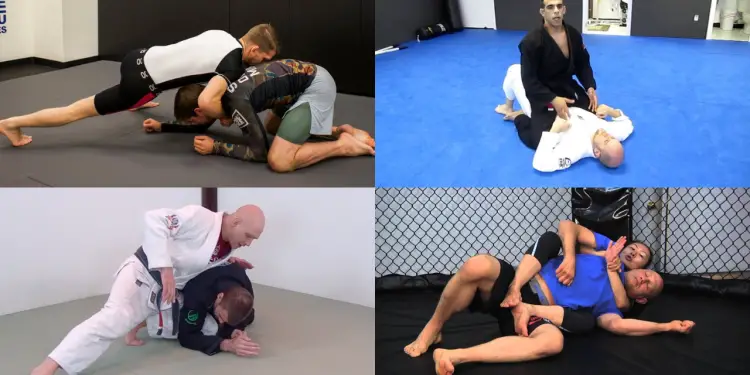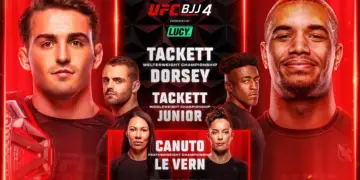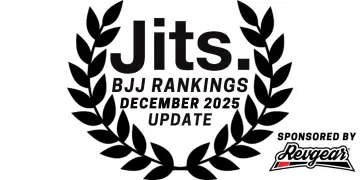Learning BJJ can often be overwhelming at first but understanding the basic control positions involved in the sport can go a long way towards making this process easier. There’s a lot more to the sport than just that of course, as the use of complex and intricate guard systems is one of the key aspects of BJJ that other grappling arts don’t have. Alongside that, there’s also the element of standing grappling that takes place before the match hits the ground and dozens of different leg entanglements that form a whole other area of BJJ to go down. Although there’s so much to learn, understanding the positions that give you control over your opponent can lead to much success in the earliest days of your journey.
For more of our BJJ guides that explain the different aspects of the sport, click here.
Basic BJJ Control Positions: The Ultimate Guide
There are several different basic control positions used in BJJ and each one of them has slightly different variations within them as well. Simple things like changing the grips being used or the position of your hips can change the offensive options available to you and the defensive options available to your opponent. Individual competitors and coaches will all have their own preferences, and it’s important to find the configuration that best suits the offensive options you want to have. The positions that allow you to control an opponent can be broken down into two distinct groups, those that allow you to control an opponent who is facing towards you by pinning them and those that allow you to control an opponent who is facing away from you and exposing their back.
Basic BJJ Top Pins
Pinning from the top is one of the fundamental aspects of BJJ and many basic or fundamental classes will involve using these control positions. Competitors usually reach these positions either by passing their opponent’s guard or by landing directly into them after securing a takedown. The main advantage to controlling your opponent from the top is that it allows you to drain their energy at a higher rate and work your way to a submission opportunity. Some of these will be seen more frequently in competition than others and in many cases, the prevalence is influenced by the points system being used.
Side Control
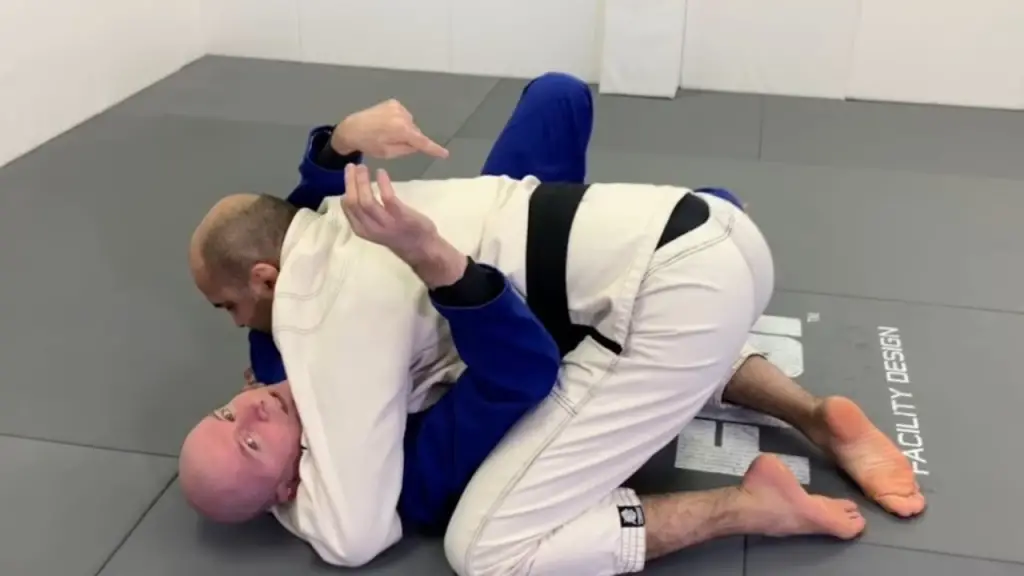
Side control is the most common of all basic top control positions used in BJJ, but it also has the most variations as well. The defining feature of the different forms of side control is that it involves the top player keeping their legs to one side of the bottom player, with their upper body on top of them. Traditional side control is performed by bringing both knees in close, one by the hips and one by the shoulder, while the arms are connected together around the opponent. The arm closest to the legs is placed underneath the opponent’s far-side armpit, while the other arm is placed underneath their head so that the hands can meet and the elbow is brought back on top of the thigh to help generate shoulder-pressure. The main variations include scarfhold, reverse scarfhold, the giftwrap, and the reverse giftwrap, although there are dozens of different options.
Knee On Belly
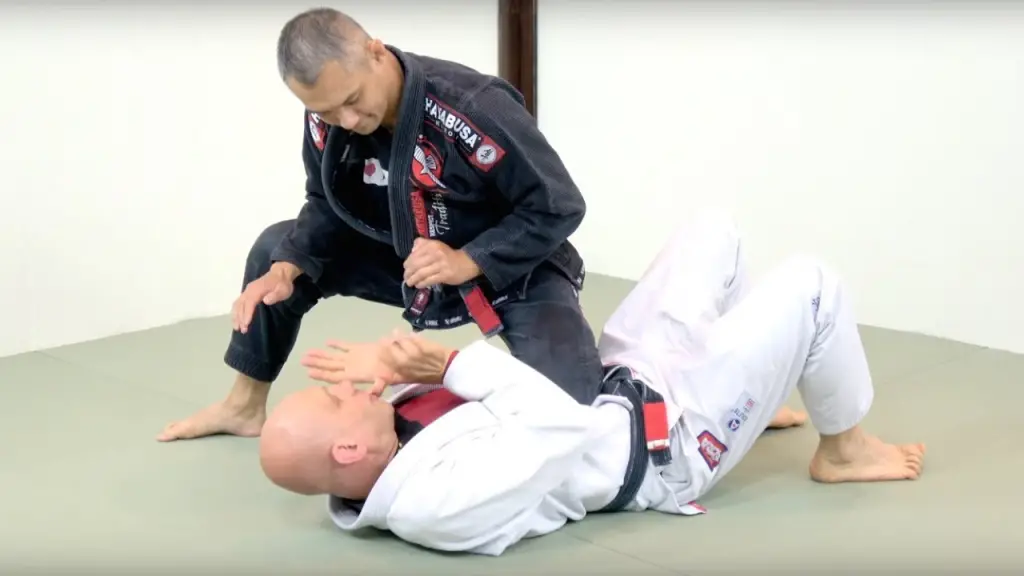
Knee On Belly is also sometimes referred to as Knee On Stomach or the Knee Ride. It is a top pinning position in BJJ that has much smaller variations than side control, as it’s requirements are much more specific. It requires the top player to position the leg closest to the opponent’s legs across their stomach, while they are standing out wide on the other leg. This forces the bottom player to carry the top player’s weight, while still allowing the top player the freedom of movement. The hands are free to grip wherever allows for control of the opponent, most commonly seen with the hand closest to the legs controlling the far-side hip and the other hand controlling the collar in the gi. Most variations of Knee On Belly are simply different positioning of the hands, while the lower body remains the same.
North South
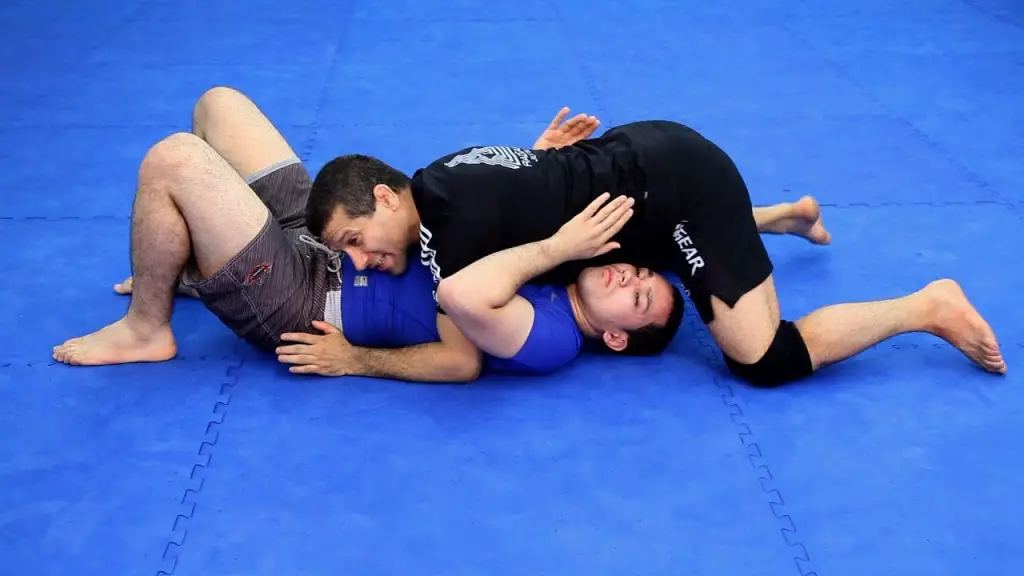
North South is a top pinning position that is seen less often in BJJ competition than side control because it is generally considered to offer less variety in offense, although some submissions are available exclusively from here. It requires the top player to be positioned opposite to the opponent, with their head facing the opponents legs and their legs above the opponent’s head. The basic version of North South requires the top player to have both hands near the bottom player’s hips and both elbows tucked into the bottom player’s armpits, with the forearms along the side of their body. The variations of North South include having one or both arms positioned around the bottom player’s head, or having one or both shins positioned on top of the bottom player’s arms.
Mount
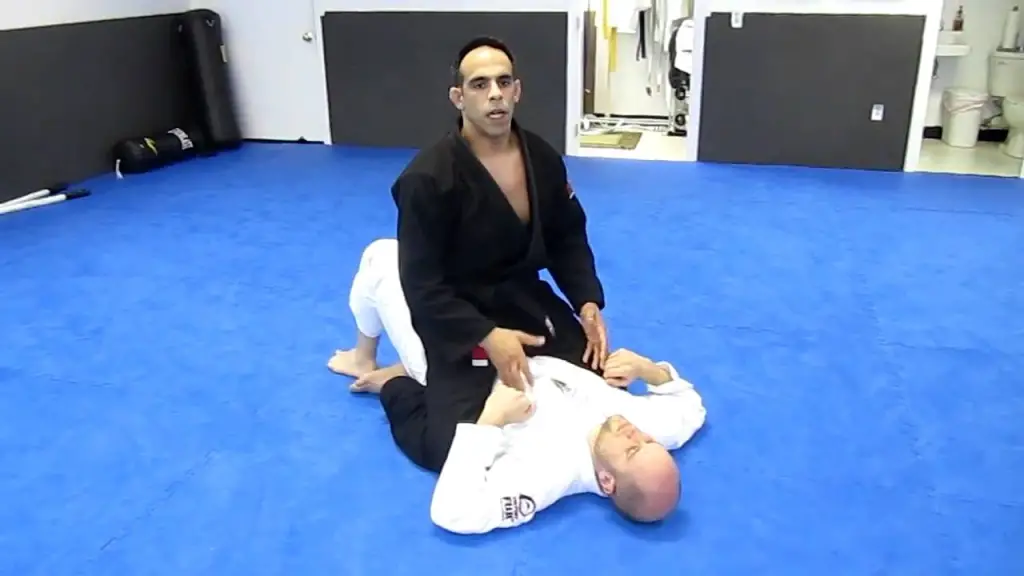
Mount is often regarded as the ultimate basic pinning position in BJJ as it offers the top player a huge amount of control. The simplest version of mount requires the top player to be sat on the chest of the bottom player, with both knees in tight to the bottom player’s body and both feet free. The reason the position offers such great control is because both hands are free to either set up submissions or post out when necessary. There are several major variations of mount like S-mount or Technical Mount along with minor changes in leg-positioning like The Grapevine or Butterfly mount. In some variations of Mount, the arms will also be positioned in specific areas in order to further improve the amount of control that the top player has.
Basic BJJ Back Exposure Positions
Another fundamental aspect of BJJ is the idea of exposing the opponent’s back and then using this to control them with one of many different positions. Competitors can reach these positions themselves by forcing back exposure through the use of various techniques likes armdrags, duck-unders, sit-throughs, and berimbolos. Additionally, many points systems like IBJJF and ADCC encourage the bottom player to turn to their knees in order to deny points being scored which in turn exposes their back to the top player. The main advantage to controlling an opponent with back exposure is that it allows you to attack an opponent from an area where they are weakest, behind them. Many of these positions are sometimes seen as stepping stones to obtaining back control itself, although there is plenty of offense available in each of them regardless.
Front Headlock
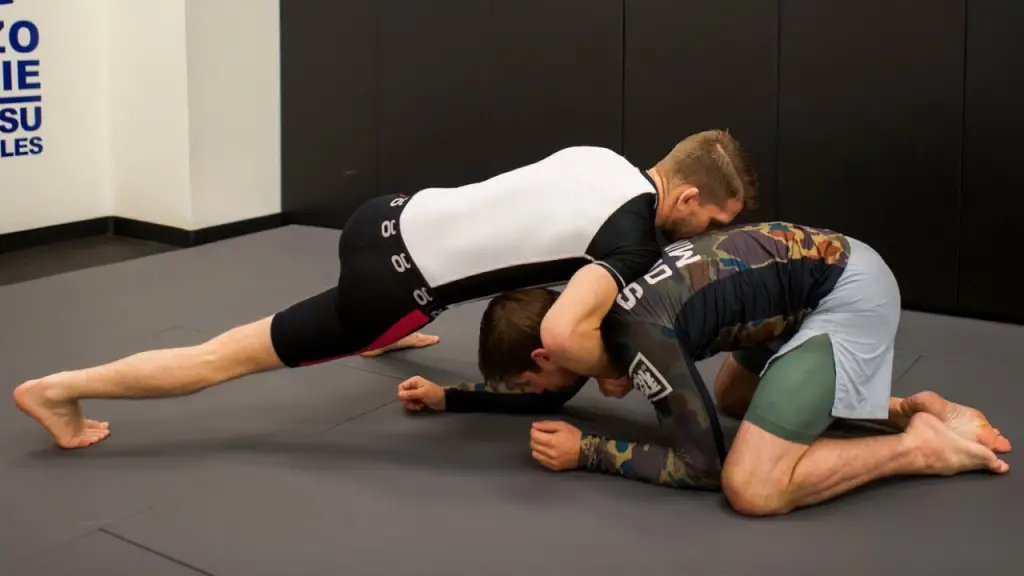
The Front Headlock is one of the basic control positions that is more commonly seen in wrestling than in BJJ, although it is still prevalent in the sport. The basic variation of the position requires the bottom player to be face-down while the top player is directly in front of them, with their chest on the back of the bottom player’s head. The top player will then connect their hands around the bottom player’s head and one of their arms, with the position often occurring when one grappler shoots in for a takedown and the other sprawls to prevent it. There aren’t many significant variations of the position and they might all look the same to the untrained eye, with the primary differences being in the way the hands are connected or the position of the arms.
Top Turtle
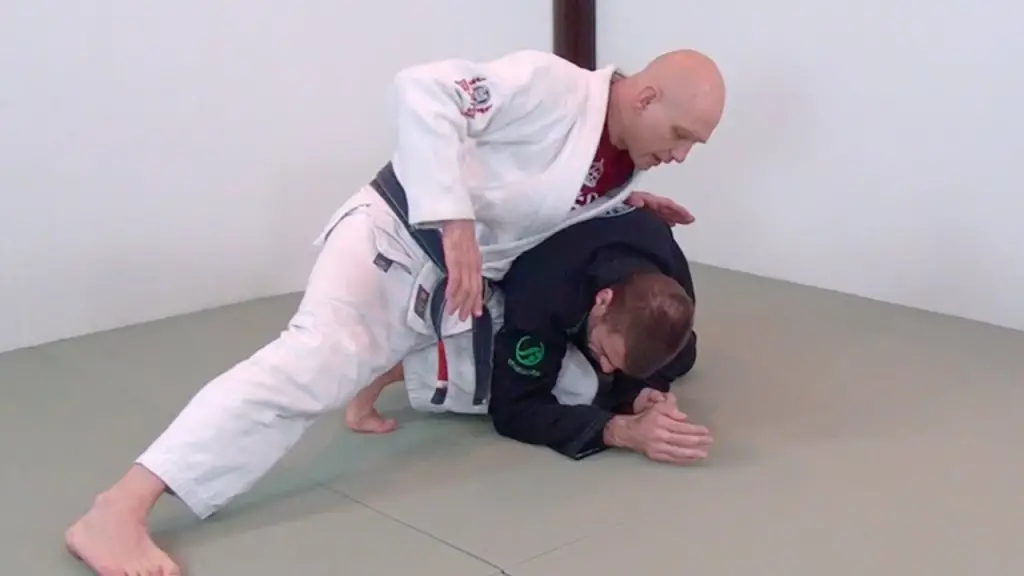
Turtle is one of a tiny number of basic BJJ positions that is simultaneously regarded as a dominant position for the top player to control and a position that the bottom player can attack from. The traditional version requires the bottom player to be facing the mat while the top player is positioned off to one side, ideally with the knee closest to the bottom player wedged in the space between their near-side arm and leg. The arm closest to the bottom player is generally used to control the far-side hip of the bottom player, while the other arm can be placed in a number of different positions. Both the legs and the arms of the top player could be in different places, with the defining feature of turtle being that the top player is behind the bottom player’s back and positioned beyond their arms.
Back Mount
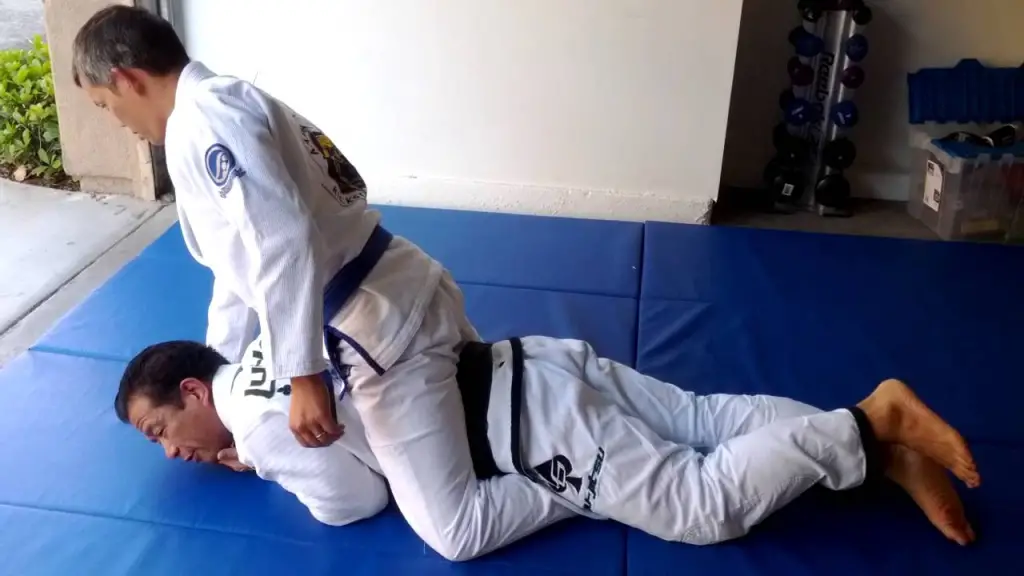
Back Mount is one of the most dominant of all basic BJJ positions and it offers the opportunity for both great positional control and top-pressure. The simplest form of the Back Mount looks the same as the simplest form of Mount, but with the bottom player face-down instead of face-up. The top player will be sat on the back of the bottom player with both of their knees in tight to the bottom player’s body while the feet are free. Much like mount, the hands are free to work for offensive opportunities or post out when necessary. The position is not too common in high-level BJJ competition, as the bottom player would almost universally prefer to be in Mount or face-up in Back Control instead to allow for a greater chance of escape.
Back Control
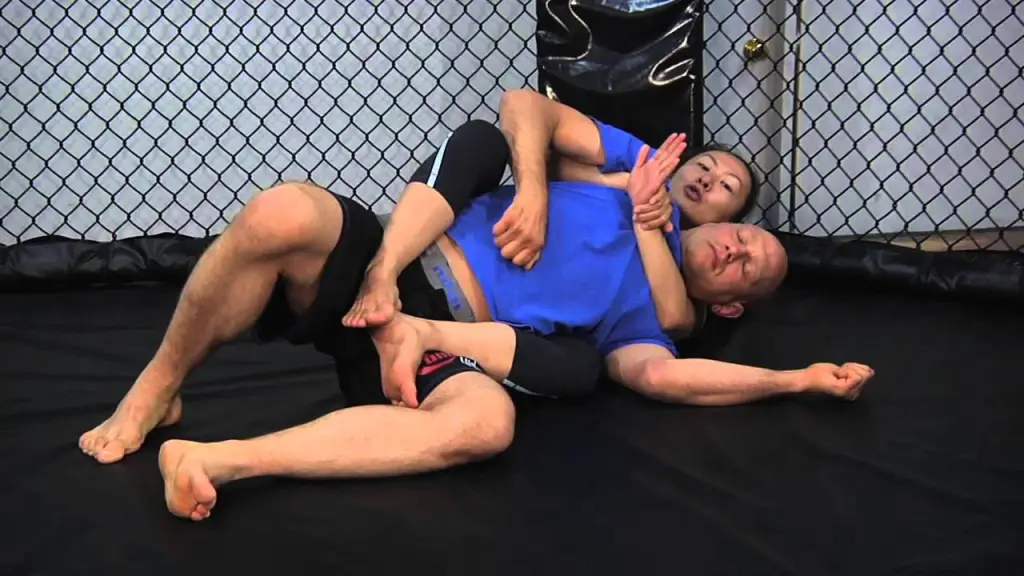
When a grappler attempts to expose the back of the opponent, generally they are attempting to secure Back Control. This is regarded by many BJJ practitioners as the ultimate form of control and the most dominant of all positions available in the sport. The basic form of the position is where the top player has their chest connected to the back of the bottom player, with both legs wrapped around their waist and laced inside the thigh in a position that is commonly referred to as ‘having hooks in’. One of the top player’s arms is under the bottom player’s armpit and one arm is over the bottom player’s shoulder, with the hands connected in what is called the Seatbelt or over-under configuration. There are many variations of Back Control that include different positioning of the legs and/or arms, with the most common being the body-triangle, the crucifix, twister control, or one of the bottom player’s arms being trapped.


